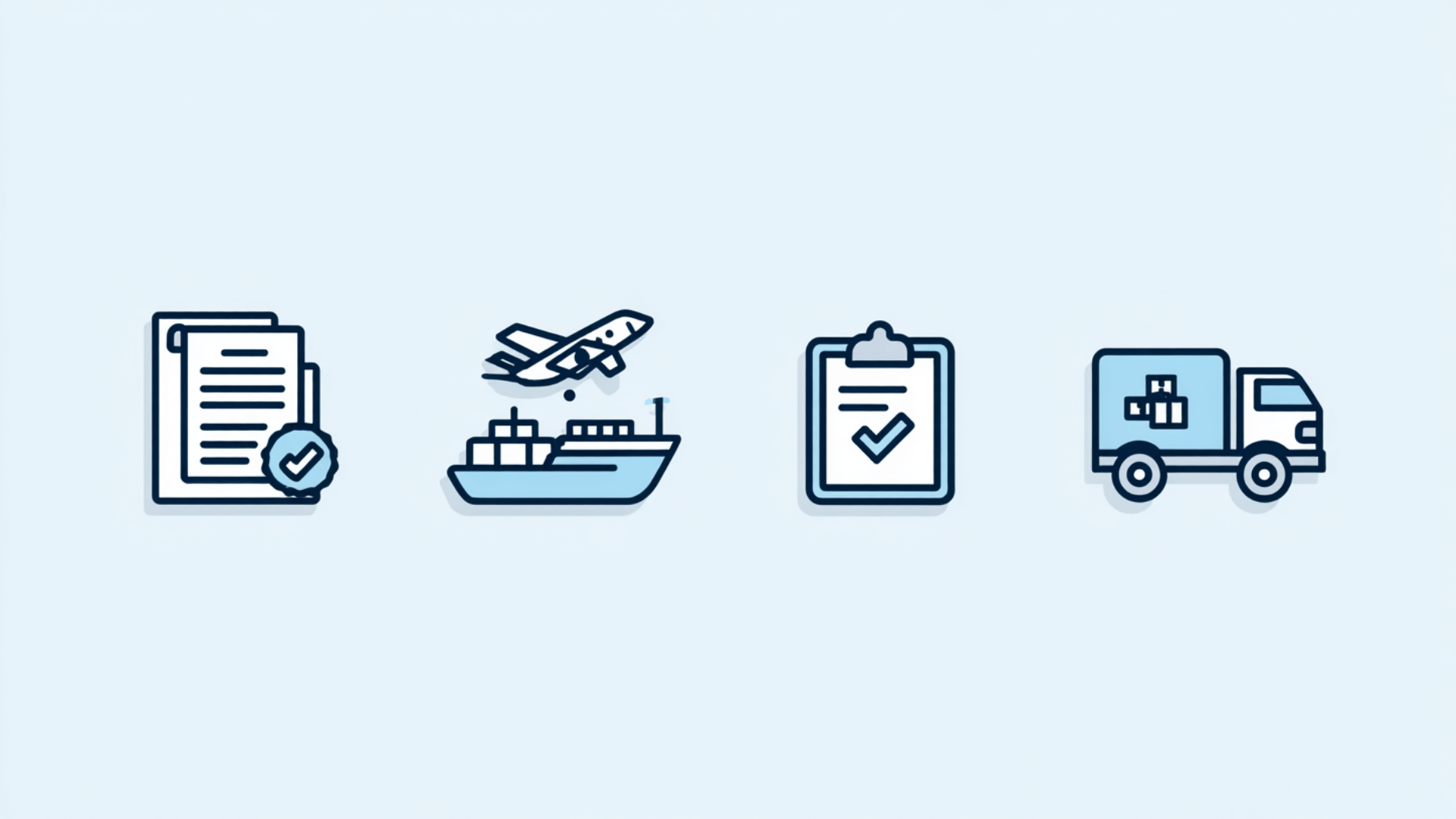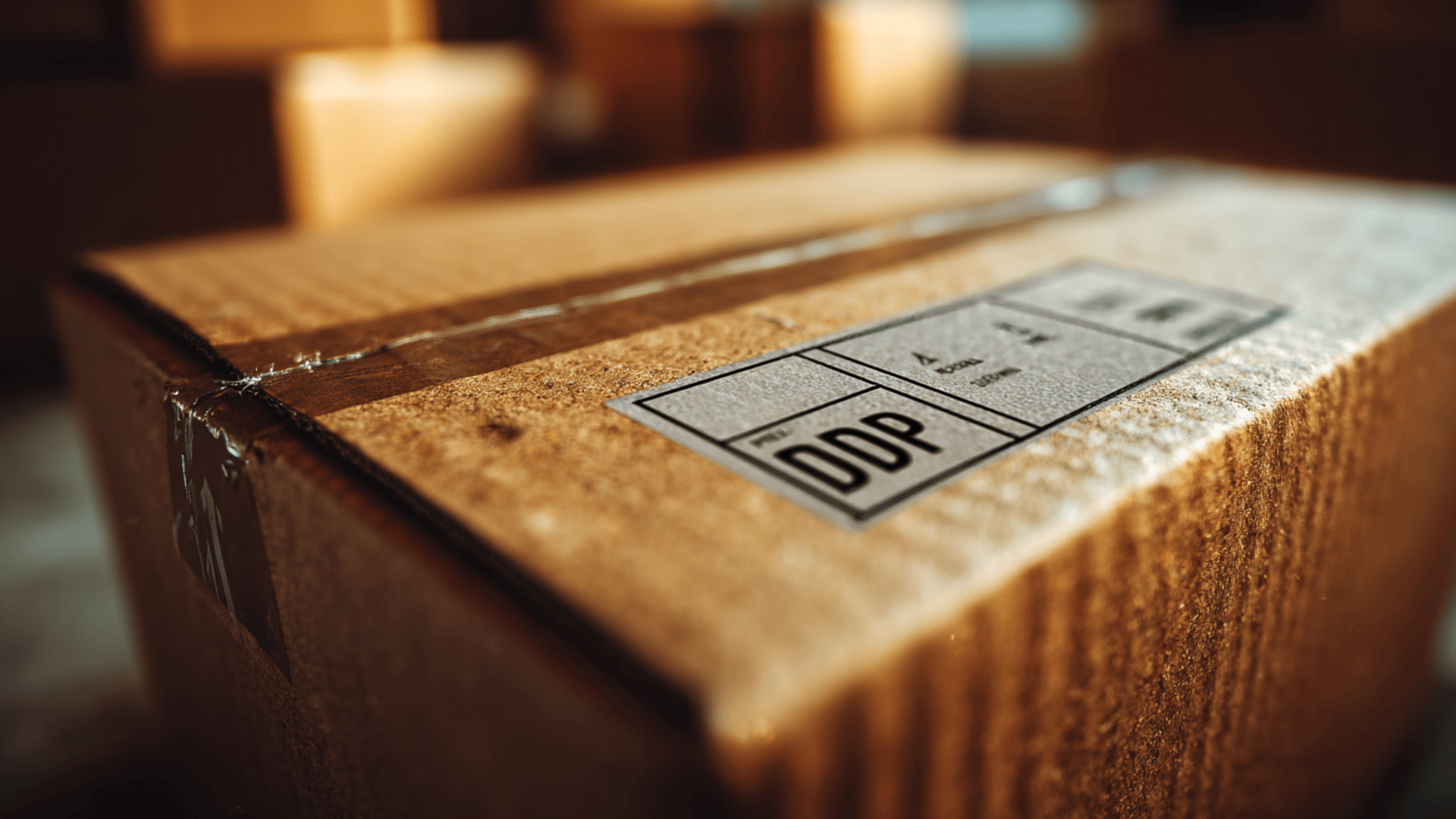Shipping across borders can feel confusing, especially when each trade term shifts who pays for what.
One question you’ll often see is “What does ddp mean in shipping?” and it’s a big one for buyers and sellers alike. At first glance, it looks simple; one side takes on more responsibility, but the reality is layered with costs, risks, and hidden details.
I’m here to show you how DDP can help you avoid mistakes, protect your profit, and create smoother deals with international partners.
If you’ve ever wondered who really carries the weight when goods move worldwide, you’re in the right place. Let’s start by breaking down what DDP actually means.
What Does DDP Mean in Shipping?
DDP stands for Delivered Duty Paid. It’s one of the common DDP shipping terms that explains who takes care of costs, customs, and risks.
With DDP, the seller does almost everything. They arrange transport, handle customs clearance, and pay duties and taxes. The seller is also responsible if anything happens to the goods before delivery.
For the buyer, it’s simple. You just receive the shipment without worrying about hidden costs or paperwork. For the seller, it means more responsibility and higher risk.
How DDP (Delivered Duty Paid) Works

A DDP shipment follows a clear path from the seller to the buyer. Each stage shows how much work the seller handles.
1. Export Clearance
The seller prepares all documents and approvals required to move goods out of their country and pays the necessary export fees.
This includes permits, licenses, and compliance checks to meet regulations. At this stage, the buyer doesn’t need to take any action.
2. International Freight
The seller arranges and pays for the main shipping method, such as air, sea, rail, or truck, depending on what was agreed in the contract.
They are also responsible for the risks during transit, including potential delays, damage, or loss..
3. Import Clearance
When the goods arrive in the buyer’s country, the seller manages customs clearance by paying import duties and taxes.
They also handle all the required paperwork and coordinate with customs authorities to ensure the shipment moves smoothly without delays.
4. Last-Mile Delivery
Finally, the seller organizes delivery to the buyer’s location, which could be a warehouse, office, or home address.
They manage local transportation, unloading if agreed, and ensure the goods reach the buyer safely. The seller’s responsibility ends once delivery is complete.
Responsibilities Under DDP
When you use DDP shipping terms, the roles of the seller and the buyer are very different. The seller carries most of the work, while the buyer has almost none.
Seller’s Responsibilities
The seller is responsible for almost every step in the process. They prepare and file the export and import paperwork, arrange transport, and cover the cost of shipping. They also pay duties, taxes, and customs fees along the way.
On top of that, the seller carries the risk until the goods are delivered to the final destination. In short, the seller owns the process from start to finish.
Buyer’s Responsibilities
The buyer’s role is much lighter. All they need to do is accept the shipment at the agreed location and check the goods once they arrive. Beyond that, there’s nothing else to manage, which is why DDP is considered the easiest option for the buyer.
That’s it. The buyer avoids paperwork, surprise fees, and delays, making the process smooth and predictable.
Benefits and Drawbacks of DDP

DDP has clear upsides for buyers, but it also comes with challenges for sellers. Looking at both sides helps you understand when it makes sense.
Benefits for Buyers
- Simplicity: No extra paperwork or surprise costs.
- Peace of mind: Duties, taxes, and delivery are already covered.
- Better planning: Buyers know the final price up front.
For many buyers, this makes international orders far less stressful.
Benefits for Sellers
- Control over the process: Sellers manage the shipment from start to finish.
- Competitive advantage: A smooth experience can attract more customers.
Sellers can win trust by making the buying process easy.
Drawbacks for Sellers
- Higher costs: Duties, taxes, and transport can add up quickly.
- More risk: The seller is responsible for delays, damage, or customs issues.
- Extra expertise needed: Knowing import rules in different countries is critical.
For sellers, DDP can work well, but it requires planning, knowledge, and the budget to handle unexpected costs.
DDP vs. Other Incoterms
Each Incoterm shifts costs and responsibilities in different ways. This breakdown shows how DDP compares to a few of the most common options:
| Term | Who Pays Duties & Taxes | Seller’s Responsibility Ends | Buyer’s Responsibility Starts | Notes |
|---|---|---|---|---|
| DDP | Seller | At the buyer’s final location (after customs and delivery) | Once goods are received | Easiest for the buyer but highest risk and cost for the seller. |
| DAP | Buyer | At the buyer’s country border or agreed place of delivery (before customs) | Customs clearance + duties/taxes | Often chosen when buyers prefer to manage their own import fees. |
| FOB | Buyer | When goods are loaded on the ship at the port of origin | From that point forward | Common in sea freight; splits costs at the port of departure. |
| DDU | Buyer | At the buyer’s location (excluding duties and taxes) | Paying duties and completing import clearance | Less common now, often replaced by DAP in modern Incoterms. |
This side-by-side view makes it easier to see how responsibilities shift. DDP is the most buyer-friendly option, while others place more costs and risks on the buyer.
When to Use (or Avoid) DDP
DDP isn’t right for every situation. It works well in some cases but can create problems in others.
When to Use DDP
- Selling to new buyers: Makes it easy for customers who don’t understand shipping.
- E-commerce and small packages: Buyers appreciate simple, all-inclusive pricing.
- Competitive markets: Offering DDP can set you apart from sellers who don’t.
- Stable customs processes: Works best when import rules are clear and predictable.
Using DDP in these situations can build trust and reduce barriers to purchase.
When to Avoid DDP
- High duties or taxes: Costs may eat into profits.
- Unfamiliar countries: Complex customs can lead to delays and extra fees.
- Large or bulky freight: Expenses and risks rise with shipment size.
- Limited logistics knowledge: If the seller isn’t experienced, DDP can backfire.
Avoiding DDP in these scenarios helps sellers protect their bottom line and reduce stress.
Common Questions About DDP
People often have the same doubts when they first hear about DDP. Here are some clear answers to help:
Is DDP free shipping?
No. It might feel like free shipping for the buyer, but the seller covers all costs. These expenses are usually included in the product price.
Is DDP door-to-door?
Yes. Under DDP, the seller is responsible until the goods reach the buyer’s agreed location. That often means direct delivery to the door.
Who pays for freight under DDP?
The seller pays for freight, duties, taxes, and other fees. The buyer only pays for the product itself.
What if goods are delayed at customs?
The seller is responsible for handling customs issues. If delays or extra charges happen, it’s the seller’s job to manage them.
Practical Tips for Sellers Offering DDP
Taking on full responsibility under DDP can feel heavy, but the right approach makes it manageable. Here are some tips that help sellers avoid problems.
- Factor costs into pricing: Build shipping, duties, and taxes into the product price so you don’t lose money.
- Work with reliable customs brokers: They can handle paperwork and help shipments clear faster.
- Get insurance: Covering goods in transit protects you if something goes wrong.
- Know local rules: Research import laws in your buyer’s country before agreeing to DDP.
- Choose trusted carriers: Partnering with carriers you trust reduces the risk of delays or damage.
By planning ahead and working with the right partners, sellers can offer DDP without it becoming overwhelming.
Real-World Example of DDP Shipping
Sometimes the best way to understand DDP is to see it in action. Here’s a simple example:
A clothing brand in the United States sells a bulk order to a boutique in Germany. The boutique chooses DDP because they don’t want to deal with customs or surprise fees.
- The U.S. seller prepares all export paperwork and pays for the goods to leave the country.
- They book international freight and cover the cost of shipping the goods to Germany.
- Once the shipment arrives, the seller pays import duties and taxes at German customs.
- Finally, they arrange local delivery to the boutique’s front door.
The German buyer only pays the agreed product price. The U.S. seller handles every step and carries the risk until the clothes are delivered.
This example shows how DDP creates a smooth buying experience, but requires the seller to plan for extra costs and responsibilities.
Wrapping Up
The big takeaway is that DDP shipping makes things easy for buyers but puts more work on sellers. Now you know how it works, what to expect, and when it makes sense to use or avoid it.
Think about your own situation. Are you ready to handle the costs and risks, or would another option fit better? I’ve found that being clear on responsibilities saves time, money, and stress.
Remember, the best choice is the one that supports your business goals.
If you’d like to keep learning, check out more of my blogs for practical shipping tips and guides that help you make smarter decisions.















